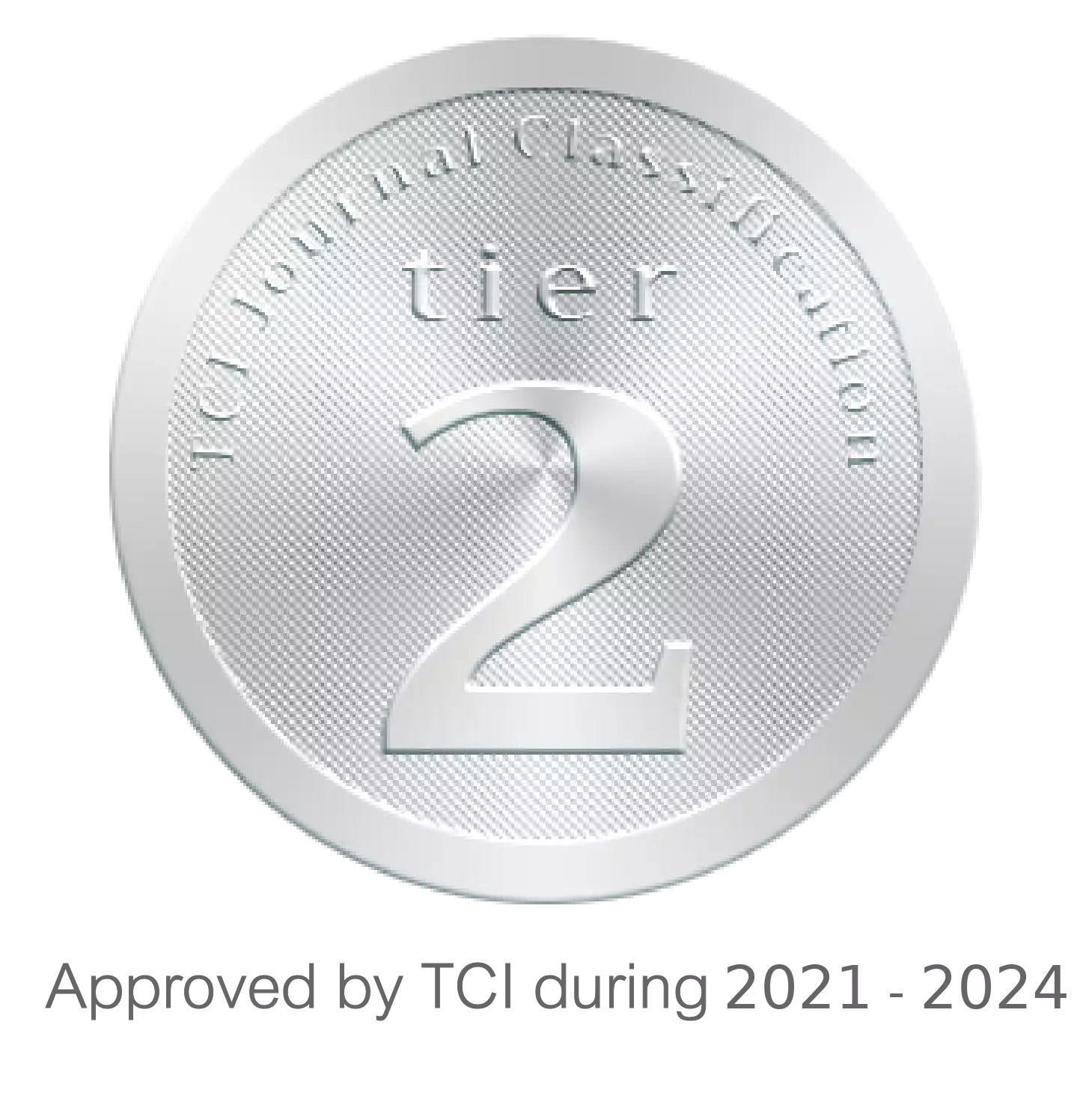แนวทางการพัฒนาสิ่งอำนวยความสะดวกทางการท่องเที่ยว กรณีศึกษา อุทยานแห่งชาติหาดนพรัตน์ธารา-หมู่เกาะพีพี จังหวัดกระบี่|Guideline for the Development of Tourist Facilities: A Case Study of Hat Noppharat Thara-Mu Phi Phi Island National Park, Krabi Province
คำสำคัญ:
สิ่งอำนวยความสะดวกทางการท่องเที่ยว อุทยานแห่งชาติหาดนพรัตน์ธารา-หมู่เกาะพีพี, Hat Noppharat Thara-Mu Ko Phi Phi National Park, Tourist Facilitiesบทคัดย่อ
อุทยานแห่งชาติหาดนพรัตน์ธารา-หมู่เกาะพีพี เป็นอุทยานแห่งชาติที่มีนักท่องเที่ยวเดินทางเข้ามาท่องเที่ยวมากที่สุดของประเทศไทย เนื่องจากมีทรัพยากรธรรมชาติทางทะเลที่หลากหลายและสวยงาม แต่ในปัจจุบันพบว่าทรัพยากรเหล่านั้นได้ถูกทำลายลงอย่างรวดเร็ว ด้วยสาเหตุสำคัญที่เกิดจากจำนวนนักท่องเที่ยวมากเกินกว่าขีดความสามารถในการรองรับของระบบนิเวศ อีกทั้งอุทยานแห่งชาติมีจำนวนเจ้าหน้าที่ไม่เพียงพอต่อการตรวจนับนักท่องเที่ยว การรักษาความปลอดภัย รวมถึงการเฝ้าระวังการกระทำความผิดจากนักท่องเที่ยวและจากผู้ประกอบการ ดังนั้นจึงจำเป็นอย่างยิ่งที่ต้องมีแนวทางการพัฒนาสิ่งอำนวยความสะดวกสะดวกในอุทยานแห่งชาติ เพื่อให้การท่องเที่ยวพัฒนาไปข้างหน้าควบคู่ไปกับการรักษาทรัพยากรธรรมชาติให้คงอยู่อย่างยั่งยืน โดยศึกษาจากตัวอย่างนักท่องเที่ยวชาวไทยและชาวต่างชาติ จำนวน 420 คน ด้วยระดับความเชื่อใน 95% โดยใช้แบบสอบถาม (Questionnaire) และทำการวิเคราะห์ข้อมูลโดยวิธีการหาค่าร้อยละ (Percentage) ค่าเฉลี่ย (Mean) และค่าเบี่ยงเบนมาตรฐาน (Standard deviation) สถิติที่ใช้ในการวิเคราะห์ข้อมูล คือ การวิเคราะห์ค่า t-test การวิเคราะห์ความแปรปรวนทางเดียว (One-way Analysis of Variance) และทดสอบรายคู่ด้วยวิธีการของเชพเฟ่ (Sheffe)
ผลการวิจัยพบว่า 1. กลุ่มประชากรตัวอย่างส่วนใหญ่เป็นเพศชาย อายุระหว่าง 25-45 ปี ส่วนใหญ่ มีสถานภาพโสด มีการศึกษาระดับปริญญาตรีหรือเทียบเท่า ส่วนใหญ่ประกอบอาชีพพนักงานบริษัทเอกชนและรายได้ต่อเดือนมากกว่า 30,000 บาท 2. นักท่องเที่ยวทั้งชาวไทยและชาวต่างชาติในอุทยานแห่งชาติหาดนพรัตน์ธารา - หมู่เกาะพีพีมีความต้องการพัฒนาสิ่งอำนวยความสะดวกทางการท่องเที่ยวทั้ง 4 ด้าน ดังนี้ ในด้านความปลอดภัย นักท่องเที่ยวทั้งชาวไทยและชาวต่างชาติมีค่าเฉลี่ยความต้องการให้ติดตั้งระบบติดตามเรือมากที่สุด ในด้านผลกระทบต่อทรัพยากรธรรมชาติ นักท่องเที่ยวมีค่าเฉลี่ยความต้องการให้สร้างท่าเทียบเรือลอยน้ำมากที่สุด ในด้านการบริหารจัดการนักท่องเที่ยว นักท่องเที่ยวมีค่าเฉลี่ยความต้องการให้จองบัตรบริการผ่านระบบออนไลน์ (E-Ticket) มากที่สุดและสุดท้ายด้านการสร้างการรับรู้ต่ออุทยานแห่งชาติ นักท่องเที่ยวมีค่าเฉลี่ยความต้องการต่อแนวทางการอบรมความรู้ให้แก่เจ้าหน้าที่มากที่สุด 3. ผลการทดสอบสมมติฐานพบว่า ปัจจัยส่วนบุคคลของนักท่องเที่ยวแตกต่างกันจะมีความต้องการต่อการพัฒนาสิ่งอำนวยความสะดวกแตกต่างกันอย่างมีนัยสำคัญทางสถิติที่ 0.05 ยกเว้น ระดับการศึกษาและรายได้
Hat Noppharat Thara-Mu Ko Phi Phi National park is the largest number of tourists in Thailand, because it has the rich and beautiful marine resources. At present, those resources have been destroyed quickly, for the major reasons caused by the number of tourists exceeding the capacity of the ecosystem. In addition, the national park has not enough staff to check tourists’ counts, security and surveillance of offenses from tourists and from entrepreneurs. Therefore, it is important to have guidelines for the development of tourist facilities. The sample size is 420 Thai and foreign tourists, with the 95% confidence. The data collecting instrument are close–ended questionnaires with the use of percentage, mean, and standard deviation. The data were analyzed by t-test, one-way analysis of variance and Scheffe procedure.
The research revealed that 1. Most of the tourist in Hat Noppharat Thara-Mu Ko Phi Phi National park, male, by the age between 25–45 years, single, bachelor degree or equivalent qualifications, occupation is most a company employee and earning more than 30,000 baht per month 2. Both Thai and foreign tourists need to develop tourism facilities in 4 areas as follows.In safety, both Thai and foreign tourists have the highest average requirement for install the ship tracking system. In the impact on natural resources, tourists have the highest average requirement for build a floating pier.In the management of tourists, tourists have the highest average requirement for book the E-Ticket.And finally, in creating awareness for the national park, tourists have the highest average requirement for approach knowledge training for staff. 3. The hypothesis testing, showed that the tourists who have different personal factor needed those different development of facilities at the 0.05 significant level (except education level and earnings factor).









